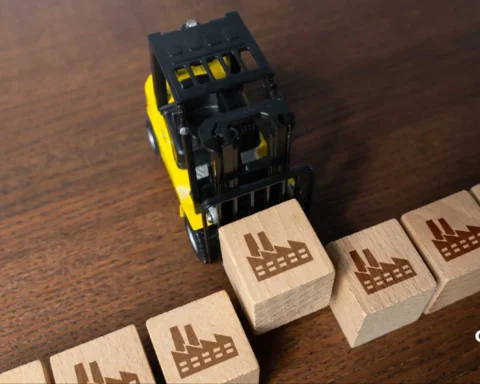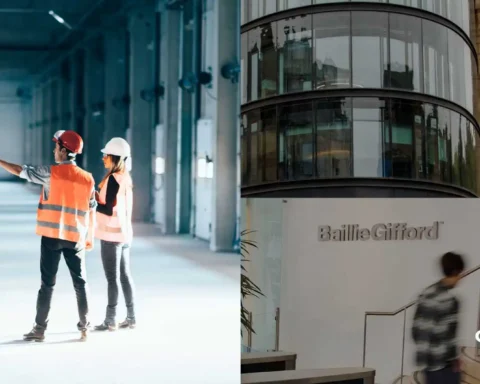Slovenia sees wood as a strategic raw material and emphasises the importance of the wood processing industry as a thriving industry with a bright future. Slovenia’s wood industry, which is still thriving today, was crucial to Slovenia’s economy before its independence. Slovenia is committed to realising its full potential, as seen by its efforts to improve the entire chain of forestry and woodworking.
Join us in this venture to find the right venture for you.
Listen To This Podcast: Is Slovenia the Emerging Logistics Goldmine in 2024? Insights from Natasa Pogacnik
Table of Contents
Slovenia’s Wood Industry: The Playing Field
The Slovenian wood industry is a ‘golden goose’, so to speak. There are challenges for nature as well as humans. This translates to business prospects. The choice of entrepreneurship depends on your field of interest and the level of commitment that can be put forth. Our earlier studies will guide you through the woods.
In this article, we probe the business ideas that can be pursued. Read along!
Business Opportunities
Sawn Wood
Slovenia’s wood industry is experiencing a positive trend in sawn wood production despite challenges like forest ownership structure and insufficient felling in privately owned forests. This growth, which is the most prominent product in Slovenia’s wood-processing industry, is a testament to resilience. Slovenia’s saw-milling industry saw a 5% increase in 2020 and a 32% increase in 2015-2019, producing over 1 million m3 of sawn wood last year. Prices of sawn coniferous products also rose.
Biomass Energy
Deciduous wood, like beech, oak, and maple, is commonly used for biomass energy production, where it is burned in specialised boilers or power plants to generate heat and electricity, which can be used for district heating or industrial processes. Using deciduous wood for biomass energy is considered renewable because the carbon emitted during combustion is reabsorbed by new tree growth, making it sustainable as long as wood consumption doesn’t exceed forest growth.
Deciduous wood, like beech, oak, and maple, is commonly used for biomass energy production, where it is burned in specialised boilers or power plants to generate heat and electricity, which can be used for district heating or industrial processes. Using deciduous wood for biomass energy is considered renewable because the carbon emitted during combustion is reabsorbed by new tree growth, making it sustainable as long as wood consumption doesn’t exceed forest growth.
Wood Fuel

Slovenia actively promotes the use of wood fuel for heating to reduce greenhouse gas emissions and transition to a more sustainable energy system, investing in modern wood fuel production facilities and technologies.
Wood fuel, such as wood pellets and chips, is widely used in Slovenia for residential, commercial, and industrial heating, supported by the country’s abundant forest resources and commitment to renewable energy and sustainable forest management.
Briquettes are eco-friendly, high-energy biomass blocks used for heating and cooking. They contribute to reduced carbon emissions, support climate change mitigation, and facilitate efficient waste management. Briquettes are sustainable, reducing pressure on forests and pollution in urban areas. They can be produced from various materials, enhancing resource efficiency and waste reduction.
Read This Article On: Slovenian Wood Industry: The Forest Story
Interior Design and Execution
Slovenia’s wood industry primarily uses Norway spruce and silver fir for furniture, flooring, and solid panels. These woods are highly valued for their quality and are widely used in both quantitative and qualitative aspects of the woodworking and furniture sectors.
Innovative Products
New technologies and manufacturing techniques enable the construction of multi-story wood buildings, such as the Expano pavilion in Murska Sobota, Slovenia, and larger facilities like halls and production halls, such as the Glulam used in the 2015 World Expo in Milan.
Low-Energy and Passive Prefabricated Buildings
Low-energy buildings are designed to reduce energy consumption by using insulation, airtight construction, energy-efficient windows and doors, advanced HVAC systems, and possibly integrating renewable energy sources like solar panels. Passive buildings achieve energy efficiency by using super-insulation, airtight construction, high-performance windows, and a mechanical ventilation system with heat recovery, resulting in a comfortable indoor climate with minimal energy input from passive solar gains and internal heat sources.
Prefabrication of sustainable buildings offers improved quality control, shorter construction times, and reduced waste, making them suitable for residential, commercial, and institutional buildings.
Smart Windows and Doors
Smart windows and doors made of wood are gaining popularity in the construction industry as they incorporate advanced technologies to improve energy efficiency, comfort, and security in buildings. Wood is a suitable material for smart windows and doors due to its insulation properties, durability, and aesthetic appeal, as well as its resistance to moisture, decay, and pests, making it reliable and long-lasting, and it is also renewable and sustainable. The use of wood in smart windows and doors can reduce greenhouse gas emissions and enhance functionality, contributing to a sustainable and circular economy.
Composite and Cross-Laminated Timber Technologies
Composite timber is an engineered wood made by combining different wood-based materials with adhesives, resins, or fibres to enhance strength, durability, and resistance to environmental factors; commonly used in structural applications like beams, columns, and decking, tailored to meet specific construction project requirements.
Cross-laminated timber (CLT) is an engineered wood product made by stacking and glueing multiple layers of wood at right angles, enhancing its structural integrity. These panels are load-bearing, fire-resistant, and have a high strength-to-weight ratio, making them popular in residential and commercial construction projects for walls, floors, and roofs. Murray Grove with 9 floors in London, UK. (2009) and the Dalston Lane project in London (5-10 stories), completed in 2017, are two examples.
The University of British Columbia is constructing an 18-story student residence using CLT, set to become the world’s tallest wooden building, while Framework, a 12-story mixed-use building in Portland, Oregon, will be the tallest CLT building in the US. The UK’s Oakwood Timber Tower, Australia’s first CLT commercial building, and Japan’s Sumitomo Forestry’s 70-story wooden skyscraper are all utilising CLT and other wood-based materials in construction projects, including the 29-story residential tower in London, the 7-story commercial building in Sydney, and a 70-story skyscraper in Tokyo.
Slovenia’s wood industry is committed to sustainability, with small manufacturing enterprises actively participating. Wood construction offers advantages like modularity, fast assembly, a healthy living environment, earthquake and fire safety, and easy upgrades or reconstruction. It’s fast to construct, pleasant to smell, and doesn’t create static electricity or radiation. Wood beams can withstand fire loads and allow safe evacuation. The possibility of CLT buildings as vertical gardens can also be considered.
Read This Article On: Slovenian Wood Industry: Sustainable Forest Management
Sustainable Furniture
Slovenia’s woodworking and furniture industry, characterised by high-quality wood, innovative design, and advanced technologies, has significant potential for global growth due to its commitment to sustainability. Slovenia’s furniture sector is focusing on sustainable wood, aligning with the global trend of responsible sourcing. Family-owned enterprises providing high-quality oak and beech panels and flooring play a crucial role in meeting the demand for sustainable wood products.
Slovenia’s strategic location and EU membership make it a promising global furniture market, with its commitment to sustainable practices and international collaborations boosting industry growth. A business like IKEA is probably not a far-fetched idea.
Wood Coatings and Other Products Based on Liquified Wood
Wood coatings and products derived from liquefied wood present a promising avenue within the coatings industry, offering environmentally friendly and sustainable alternatives. The business context for these innovations includes:
Environmental Sustainability: Liquefied wood products are a sustainable alternative to traditional materials like formaldehyde in particleboard manufacturing, addressing the growing demand for eco-friendly solutions.
Wood Coatings Market Growth: The global wood coatings market is expanding due to increased construction activities and demand for aesthetically pleasing finishes, with liquefied wood being a key sustainable practice.
Bio-Based Protection: Liquefied wood-derived natural bio-based products provide a renewable and biodegradable solution for protecting wood against degradation, suitable for both interior and exterior wood applications.
Global Market Presence: The global wood coating market is anticipated to grow, presenting businesses with opportunities to incorporate liquefied wood into their products, thereby promoting sustainable practices.
In summary, the business context for wood coatings and products based on liquefied wood revolves around sustainability, market growth, and the increasing preference for eco-friendly solutions in the coatings industry.
Nanocellulose
Nanocellulose, derived from wood pulp, agricultural residues, or bacteria, is a type of cellulose fibre or crystal with nanoscale dimensions. It exhibits remarkable mechanical, thermal, and barrier properties, leading to its diverse range of applications:
Film Formation: Packaging applications can benefit from the use of nanocellulose because it can form films that function as barriers against gases, vapour, grease, and oil.
Drug Delivery Systems: Production methods allow the development of matrix drug delivery systems that resemble films, which may be used in the pharmaceutical industry.
Coatings and Membranes: Nanocellulose contributes to the development of coating technologies through its versatility in applications such as biopolymer delivery systems, membranes, and tablet coatings.
Sustainable Materials: Nanocellulose, a renewable resource, is gaining attention due to its sustainable nature and its compatibility with eco-friendly practices across various industries.
Emerging Technologies: Research on new methods of producing nanocellulose is still ongoing, with a focus on the material science and engineering fields.
Read This Article On: Slovenia’s Wood Industry: Climate Change Mitigation
Latest Wood Technology
The latest wood technologies encompass various innovative approaches, including:
Engineered Wood Products: Technological developments in engineered wood include densification, mineralisation, and chemical modification, which improve the characteristics and uses of wood.
Massive Wood Slabs: The market for large wood slabs is developing, with an emphasis on answering complex questions about the creation of new goods.
Weinig’s Technology Display: At Holz-Handwerk 2024, Weinig recently unveiled new technology with thirty exhibits and live demonstrations of cutting-edge machinery.
Equipment Forecasts: In the wood industry, projections for 2024 include the expectation of budget constraints and the construction of new kilns for softwood and hardwood.
Success Stories in Sustainability
Several success stories highlight sustainability efforts in the Slovenian wood industry:
- The National Workshop on Sustainability highlights the significance of environmentally friendly practices and the results of a national workshop in its report on promoting sustainability in the Slovenian wood industry.
- The Towards Green Transition Facility supports the Slovenian Wood Industry Cluster, demonstrating a dedication to eco-friendly practices.
- Papers from the Multidisciplinary Digital Publishing Institute (MDPI), Switzerland, address a thorough modelling of how the Slovenian wood industry would respond to climate action by using wood products as efficiently as possible.
- The book “Contemporary Slovenian Timber Architecture” highlights more than fifty projects completed in ten years, highlighting a novel solution to the problems associated with energy efficiency and the environment in buildings.
- Jezeršek Carpentry is a well-established family business in Slovenia, specialising in the manufacture of wooden products, particularly staircases, and is recognised for its craftsmanship and dedication to quality, contributing significantly to the woodworking industry in the country.
- The Museum of Metropolitan Art’s (MoMA) architecture collection includes wooden chairs designed by Slovenian designer Niko Kralj. Wooden toys, buildings, and furniture have won awards across the globe. Via crowdfunding websites, a new generation of Slovenian designers is introducing wooden goods.
- Slovenia has a modest furniture market, with specialised markets for caravan and boat building, small series furniture, hotel furniture, and large retailer networks.
You Might Be Interested In: Slovenian Economic Recovery: Post-COVID Challenges and Reforms
Conclusion
Slovenia is committed to sustainable forest management and the wood industry, balancing the ecological, economic, and social functions of its forests. The country actively promotes responsible forest stewardship at national and international levels. Slovenia’s woodworking industry, which is fueled by sustainable wood practices, holds significant potential for a global-level business.
The idiom “Can’t see the forest for the trees” is apt for this topic in discussion. However, we would like to take it to the next level. Why not “see the global forest cover and its immense potential’’ for undertaking a new venture that is positive for the planet, the people, and the profits?










[…] Read This Article On: Slovenian Wood Industry: Sustainable Business Prospects […]
[…] sustainable practices and smart urban development. Here are some green principles followed by Slovenian cities that contribute to their overall well-being and environmental […]
[…] for Africa's development, bridging domestic savings and investment gaps, and contributing to sustainable development goals and economic […]
[…] Black Economic Empowerment (BEE) policies promote black ownership and business participation, aiming to address past inequalities, but some entrepreneurs feel excluded or disadvantaged, impacting their business prospects. […]
[…] established already, blockchain has massive potential to become a powerful tool for sustainable business […]
[…] resulting in a more competitive and dynamic corporate climate. This market liberalization of business prospects created an environment for middle-class entrepreneurs to develop and prosper, considerably […]